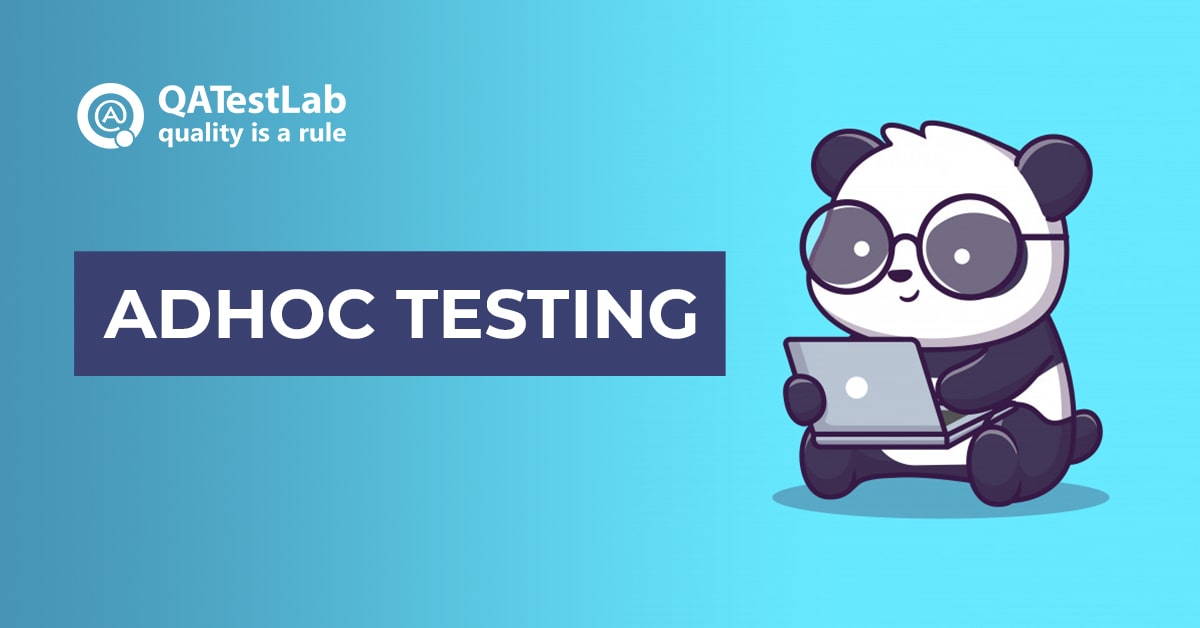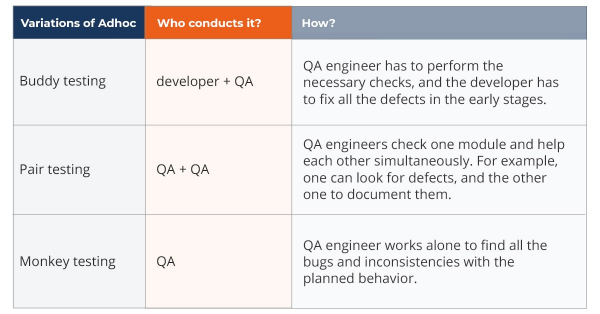
Pure improvisation, totally spur-of-the-moment creativity... no, it’s not a jazz composition or contemporary dance, it’s Adhoc testing. This type of ensuring software quality can be viewed as a protest against all existing testing techniques. All this because conducting it doesn’t require following the plan or technical documentation. Adhoc is a matter of imagination.
When and why we need to carry out Adhoc testing? What software is suitable for it? How to add value to the overall QA process and product quality with it? Let’s dive into the beginners-friendly investigation of software testing fundamentals made by QATestLab. This article will be both suitable for QA engineers and anyone interested in how to tap into Adhoc testing power as well.
What is Adhoc Testing?
The term ad hoc takes its origin from the Latin phrase meaning "to this." Both for any other cases and QA services, in particular, Adhoc implies something that is created or done only once, for a specific purpose as deemed necessary. Referring to a more general branch of Acceptance Testing methods, Adhoc also has alternative titles like Random and Monkey Testing that speak for itself.
Manifesting a chaotic nature, Adhoc has only one goal - to reveal hidden software bottlenecks that typically do not fall under formal testing procedures. To disclose defects that would never have been found if written test cases existed, QA engineer must trust the creativity to the fullest extent act intuitively. Logically enough, for a successful performance, any plan or documentation is needed.
When & How to Execute Adhoc Testing
Despite the uncontrolled nature, the Adhoc approach still requires following certain conditions to receive expected results. While there are no rules for the process of testing, there is an essential rule concerning the area of application. For instance, it is mandatory to conduct this type of quality assurance exclusively for known products. QA specialists should be well-oriented on the product's purpose and basic functionality.

Let’s take a closer look at the types of ad-hoc testing:
- Buddy testing. It is one of the variations of ad-hoc testing, where two people are involved (usually a developer and a tester). Combining each of their expertise, they work in parallel and find defects in the same module of the product under test. This type of testing helps QA engineer has to perform the necessary checks, and the developer has to fix all the defects in the early stages.
- Pair testing. As well as the previous type, Pair testing involves the action of two specialists, but this time only QA engineers. As a rule, they check one module and help each other simultaneously. For example, one can look for defects, and the other one to document them. Thus, one tester will have the function of, let’s say, a detector, the other a descriptor.
- Monkey testing. It is the most interesting option when the QA engineer works alone and acts as creatively as possible. The main goal is to find all the bugs and inconsistencies with the planned behavior. To do this, the QA engineer can use variations of the input data, disrupt the program, or cause it to stop. In simple words, a testing specialist has to break software.
All of the above types can be used both separately or mixed for greater efficiency.
How to Perform Ad-hoc testing: Simple Example
To explain the meaning behind Adhoc testing, a good example in that regard could serve a regular visit to a mall. For example, once you walk into a supermarket, you will most likely be looking for a grocery basket. If you do not find one free basket - this can be considered a potential bug. Next, you will look for the desired products, and if you find products with expired expiration dates or a discrepancy in price or weight - you will find other bugs. Acting completely naturally and at ease, we can discover one bug after another without breaking a sweat.
Going back to software testing, in case of checking software, there will be a certain checklist. For instance, when conducting Adhoc testing for an online-store, the QA engineer should ensure that:
- all site features are available without registration;
- all animations and pictures are displaying correctly;
- all site features are available after registration;
- the process of adding/removing from the basket is working flawlessly;
- the purchase payment process is working well;
- the store is friendly for newcomers, there are tips and customer support.
The checklist mentioned above can serve as a sample. Still, in real conditions, a QA engineer acts with pure improvisation and has the opportunity to use all the knowledge to the fullest. With minimal effort, Adhoc can help anticipate even the most complex scenarios and identify potential problems. For this reason, it is one of the most favorite types of software testing.
Best Practices To Make Adhoc Testing More Effective
Ways to Improve Ad-hoc Testing:
- Preparation. A great thing that can help with testing is to do a defect analysis in similar applications, thereby increasing the likelihood of detecting such defects in the test application.
- Draft Formation. This should not be a detailed test plan, but an outline of where to start and what problems to look for.
- Session Testing. Test various product features in turn, i.e. not all at once. It helps to focus and understand the problems better.
- Focus on targeted areas. Check those areas that are not covered by the test design and test documentation.
- The usage of additional tools. Some defects can be detected using debuggers, profilers, and monitoring applications.
- Test results recording. Recording bugs will come in handy both for developers and testers to see the overall picture of what is working well, and what isn’t.
Final Word
To sum it up, Adhoc testing serves as a great tool for QA engineers to ensure software quality and use a creative approach at the same time. Without the necessity to write a test plan or follow technical documentation, this type of checking software has a variety of advantages like:
- it allows to find difficult to reproduce and elusive defects that could not be found using standard test scripts;
- it is easy to start and implement. That’s why it is suitable for QA engineers with little or no experience in software testing;
- no planning and documentation needed.
Are there any disadvantages? Since this is not planned/ structured, there is no way to account for the time and effort invested in this kind of testing. Besides, Adhoc requires having the right intuition in terms of foreseeing potential defect ridden areas.
If your products are requiring testing, we are ready to hedge your team and ensure high quality. We are participating in the life of the product, and do our work with a passion for your success. Contact us, or visit our blog to read more about QA & testing.
Let's make great products together!
